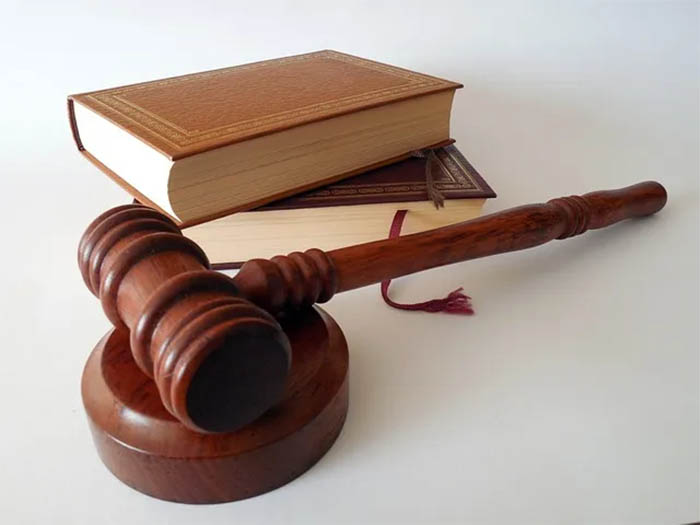- Knowledge
[Complete History]
patent infringementJudgment principle

In life, we often hear the saying: There are no two identical leaves in the world. Similarly, there are no two cases in the world that are exactly the same. But these do not prevent people from summarizing the facts of the case, finding the same types of social relationships and legal facts, and applying the same trial principles, ultimately achieving relative judicial fairness.
The key to the fair application of judicial trial principles lies in the subjective initiative of legal professionals, the same professional thinking filtering, and the same professional skill processing.
Today, we will start from the perspective of patent infringement and sort out the relevant legal principles for determining patent infringement throughout history. Let's review these legal principles that have crossed the intellectual property judicial field together!
1、 Principle of comprehensive coverage
The principle of comprehensive coverage is a fundamental and primary principle in patent infringement determination.
The principle of comprehensive coverage (also known as the principle of covering all technical features or the principle of literal infringement) refers to the fact that the technical features of the accused infringing product or method (hereinafter referred to as the accused infringing object) correspond one-to-one and are identical to all the technical features recorded in the claims of the patent, or that the technical features of the accused infringing object include all the technical features recorded in the claims of the patent and also add some other technical features, in order to determine the existence of infringement.
2、 Principle of equivalence
The principle of equivalence, which originated in the United States and is now widely recognized by major countries/regions such as the United States, Europe, Japan, and South Korea, is an important principle in patent infringement determination. It is also a principle widely applied by courts when determining patent infringement. Some people say that it is a modification of the principle of full coverage.
The principle of equivalence refers to the fact that although the technical features of the accused infringing object are different from all the necessary technical features recorded in the patent claims, if the difference is non substantive, the former is only achieved by using basically the same means as the latter to achieve basically the same function and effect, and ordinary technical personnel in this field can associate the features without creative labor, that is, equivalent features, then it can still be determined that there is infringement.
3、 The principle of non reversal
The principle of estoppel originated from equity law in England and was gradually absorbed by common law, becoming an important principle that parties should follow in adversarial legal proceedings such as litigation.
The general interpretation of the principle of estoppel refers to the fact that from the date of disclosure of a technical solution, whether in the process of establishing rights or in the maintenance of rights and infringement litigation after the establishment of rights, it is not allowed to make contradictory interpretations of its content. The narrow interpretation of the principle of estoppel refers to the situation where, in the process of patent approval, revocation, or invalidation, the patentee, in order to determine the novelty and creativity of their patent, makes a written declaration or modifies the patent document to limit or partially waive the protection scope of the patent claims, and thus obtains the patent right. In patent infringement litigation, when the court applies the principle of equivalence to determine the protection scope of the patent right, it should prohibit the patentee from reintroducing the restricted, excluded, or abandoned content into the protection scope of the patent right.
The principle of estoppel is considered an important limitation on the principle of equivalence. When there is a conflict in the application of the principle of equivalence and the principle of estoppel, that is, when the plaintiff claims to use the principle of equivalence to determine that the defendant has infringed their patent rights, and the defendant claims to use the principle of estoppel to determine that they have not infringed their patent rights, the principle of estoppel should be given priority.
4、 Donation principle
The United States is a country that has long applied the principle of donation. In the classic case of Miller v. Brass, heard by the US High Court in 1881, the patentee disclosed the structure of two types of lamps in the specification, but only requested protection for one of them. More than ten years later, the patentee discovered that another structure was actually better, so they wanted to seek protection for that structure through a reissuance procedure. The US Supreme Court did not support the patent owner's request. The court pointed out in its judgment that "if protection is requested for a certain device, but protection is not requested for other devices that are clearly visible from the surface of the patent, legally speaking, those that are not requested for protection are donated to the public, unless it promptly requests reissuance and proves that the failure to request protection for other devices was entirely due to negligence, accident, or error“
5、 Principle of first use rights
The principle of first use right, also known as the right of first use defense, originates from the principle of fairness in law.
In current patent infringement disputes, the accused infringer often uses the right of first use as a defense. So there are strict conditions for the application of the principle of first use rights.
Time factor:
The disputed technological achievements developed by the first person and the preparation for implementing such technological achievements should be done before the date of filing the patent application by the patentee.
Source factors:
The disputed technological achievement should be independently researched and developed by oneself or obtained through other legal means.
Scope of use factors:
The continued use of the technological achievement by the first person should be within the original scope and should not expand the scope of use. The so-called "original scope" includes two parts: the scope of "using" the disputed technological achievements and the scope of "necessary preparations" for using the disputed technological achievements.
6、 Implementing the principle of non infringement of publicly known existing technology
The implementation of the principle of non infringement of publicly known existing technology, namely the defense of existing technology and the right to defense of publicly known technology, is a newly added system in China's 2008 revision of the Patent Law. Existing technology "refers to the technology known to the public both domestically and internationally prior to the application date.
7、 Compromise principle
The compromise principle is an interpretive principle for the scope of protection of invention and utility model patents. There have been two representative approaches in the world for understanding and interpreting claims, or determining the scope of patent protection. One is the central limit customization represented by Germany, and the other is the peripheral limit customization represented by the United Kingdom and the United States. The central restriction system is unfair to the general public, while the peripheral restriction system is not conducive to the protection of patent holders. In order to make up for the shortcomings of the above two methods, many countries in the world, including Germany, which used central restriction system, and the United States, which used peripheral restriction system, have turned to the principle of compromise.
8、 Principle of improving inferior inventions
The so-called modified invention refers to: "The controlled object replaces individual necessary technical features of the patented technology with a simple technical feature, and utilizes and implements other necessary technical features, which can generally achieve the invention purpose of the patented technology, but causes a certain degree of deterioration of the patented technical solution and reduces its technical effect.
9、 Excess designation principle
The principle of excess specification, also known as the principle of excluding non essential technical features, refers to the principle that when interpreting independent claims of a patent and determining the scope of patent protection, obvious additional technical features (i.e. excess features) recorded in the independent claims are omitted, and only the essential technical features in the independent claims are used to determine the scope of patent protection, and to determine whether the accused infringing object (product or method) covers the scope of patent protection. If the accused infringing property of the defendant does not contain the redundant feature, it can still be determined that the defendant has infringed.
There are different opinions around the world on whether this principle should be applied in patent infringement judgments. The British court acknowledges this principle, but believes that when applying it, the court must weigh the role of this feature in the claims and infer the author's intention to include this technical feature in the claims. After years of ambiguity and wavering, the United States finally explicitly rejected this principle in the Hilton case.
At present, the principle of redundant designation is no longer applicable in patent judicial trials in China. Therefore, when drafting the claims of invention patents and utility model patent applications, patent applicants should reasonably determine the scope of patent protection based on the specific situation of prior art, and avoid including non essential technical features in independent claims in order to obtain better authorization prospects.
10、 Reverse equivalence principle
The principle of reverse equivalence, also known as the principle of reverse equivalence, has not yet been established in China. However, with the development of technology and law, this principle is gradually receiving attention in the fields of legal theory and judicial practice.
The so-called reverse equivalence principle refers to the fact that when the accused infringing object reproduces all the technical features recorded in the patent claims, if the accused infringing object has undergone fundamental changes compared to the patent technology, and has achieved the same or basically the same function or effect as the patent technology in a way that is substantially different from the patent technology, it should not be recognized as infringement.
summarize
The above ten principles are currently adopted by most countries in the world for patent infringement determination. However, each country's specific interpretation may vary, and specific analysis is needed based on specific issues.
It should be noted that some principles are not applicable in China, and when facing relevant issues in domestic cases, appropriate methods need to be chosen for response.







